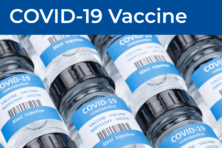Scorpions, Fingerprint Genes and a Nicotine Vaccine
- Share
- Tweet
- Pin
- Share
• The Food and Drug Administration just approved a new drug, “Anascorp,” that counteracts the venom of scorpions. Scorpion bites are not much of a problem in Wisconsin, but scorpions sting about 8,000 people in Arizona and close to 250,000 in Mexico each year. Stings from the most deadly species can cause death and convulsions if untreated. The successful clinical study, reported in The New England Journal of Medicine in 2009, showed that in young children, Anascorp is especially effective in preventing breathing problems brought on by the scorpion’s paralyzing neurotoxin.
• Adermatoglyphia (ADF) is a rare skin condition where the individual has no fingerprints. It was discovered when custom agents tried to fingerprint a Swiss woman entering the U.S., and they were surprised when they found nothing to print. A dermatologist in Switzerland suspected there might be a genetic basis for her lack of fingerprints. His theory was supported when studies showed that nine members of the woman’s extended family also lacked fingerprints. In-depth genetic analysis proved the dermatologist correct when it was found that a skin gene was partially covered up, preventing the “fingerprint gene” from expressing itself and initiating the formation of fingerprints. (Science, Aug. 12, 2911)
• It is estimated that trillions of cubic feet of natural gas and billions of barrels of oil lie buried offshore under Alaska’s outer continental shelf (OCS). To the chagrin of environmentalists, and with concerns expressed in a 279-page report from the U.S. Geological Survey (USGS), the Department of the Interior approved Shell Oil Co.’s plans to drill four exploratory wells in the Arctic Ocean in 2012. This would be a key step toward opening up one of the world’s most pristine and unforgiving marine environments, where drill rigs would have to deal with heavy storms, drifting sea ice, fog, and bitter cold. The USGS argues that there are tremendous data gaps that oil companies fail to address in regard to drilling in the area. The USGS report addresses possible impacts on wildlife in the drilling areas and underscores a lack of understanding of long-term effects on the ecology of life on the shelf. With the Gulf of Mexico disaster in mind, a major concern is the possibility of a spill under sea ice. (Science, Aug. 12, 2011)
• Although female black widow spiders often kill and eat smaller males after copulating, researchers have discovered that some males avoid being eaten by selecting well-fed females with which to mate. Apparently females that have full stomachs release a pheromone that the male can sense. (Smithsonian Magazine, Sept. 2011)
• Good news for smokers who are determined to kick the habit. Health officials are excited about a nicotine vaccine that is in the final phase of its clinical trials. The vaccine, called “NicVAX,” works by stimulating the body’s immune system to produce antibodies to nicotine. Nicotine dependency occurs because the small nicotine molecules enter the brain and bind with “feel good” receptors. Nicotine antibodies bind to nicotine, and the combined molecule is too large to get into the brain. The antibody treatment promises to be another tool used by smokers to shake nicotine addiction. (ScientificAmerican.com, Sept., 2011).
• Near Brittany, France, algal blooms caused by excessive farm runoff end up as slimy masses along a picturesque beach. Recently 36 wild boars were found dead along such a beach, and their death has been attributed to hydrogen sulfide gas produced by the rotting algae. Angry farmers denied culpability, but autopsies confirmed death by hydrogen sulfide poisoning. In 2009 a horse in the area died of hydrogen sulfide poisoning, and there is evidence a truck driver who was removing dead algae also died from inhalation of the gas. (Science, Aug. 19, 2011)

